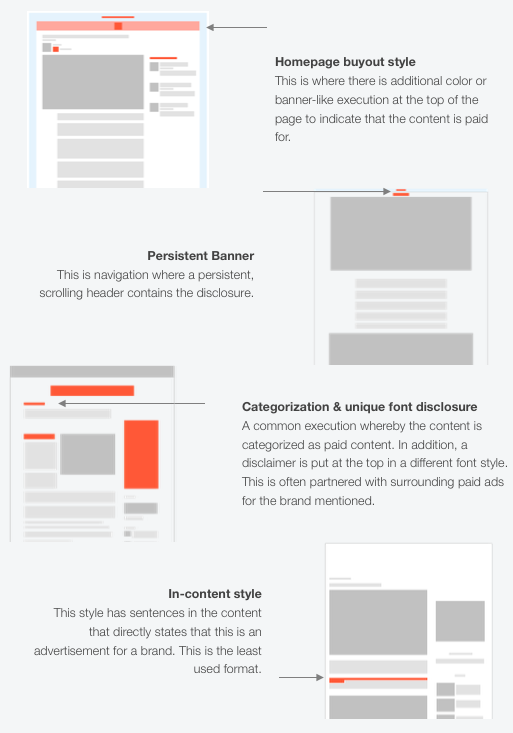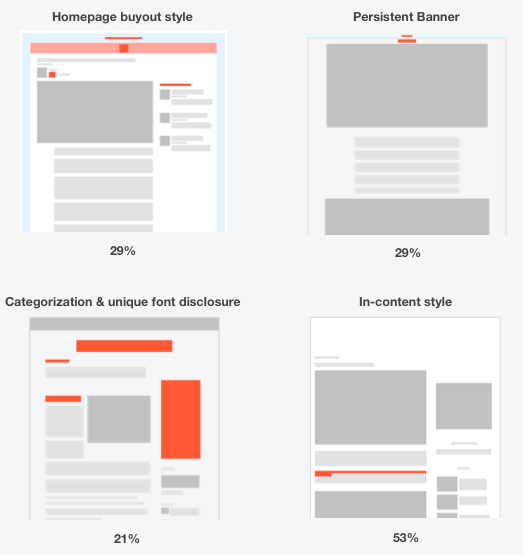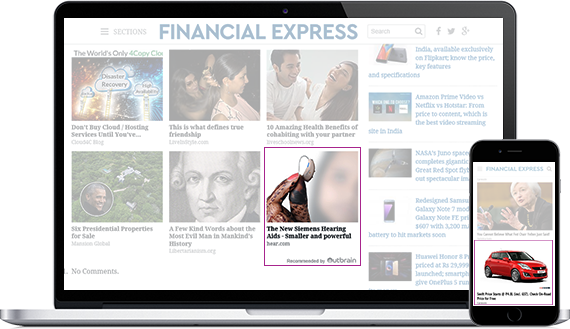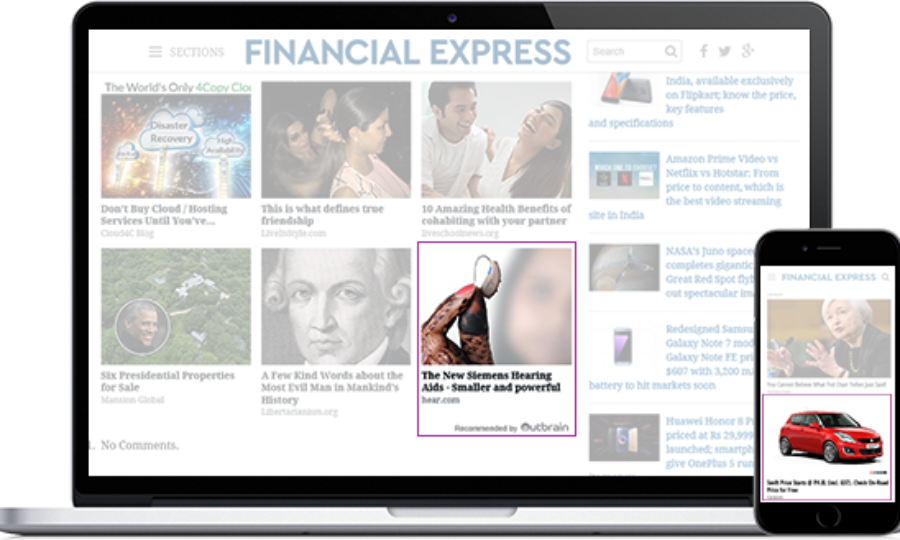Summary
A while back, The New York Times decided to shrink their native ad disclosures. In response to that, we sought to understand what the best way to disclose a custom native ad is.
Was their change meaningful?
To find out, we recruited some participants to read sponsored content, to see if they could identify it as an ad.
The results were surprising. We found the most common disclosures were ineffective, in that readers seemed to indicate banner blindness to the disclosures.
However, when disclosures were in the content, people’s ability to identify it doubled.
Native disclosures work best for custom native ads.
We believe the way to increase awareness here is repetition in the article and consumer education, because consumers don’t fully understand that an article can be an ad.
Introduction
We conducted a survey to understand whether one type of disclosure was more effective than another. Our aim is to better inform consumers and publishers about the most effective type of disclosure for custom native ads. This is important; if industry standards are not developed, more serious action may be taken.
We want to assist in the development of this framework.
Definitions
- Disclosure: informing of the reader that the content is an advertisement for a brand.
- Custom native ad: an advertorial style article or piece of content.
We classify effective disclosure as the reader being reasonably informed that it is an advertisement but in a way which doesn’t diminish the potential of the content. Thus achieving a great consumer, publisher and advertiser experience.
Methodology
Four pieces of content were selected with native ad disclosures. Three were typical, and one was atypical. The participants were to read the article, followed by a short survey. The overall process took 5-10 minutes.
The questions:
- Confirmed they had read the article.
- Asked them to rate the content on a 1 to 5 scale, 1 = Poor , 5 = Excellent.
- Asked two questions about the content itself.
- Asked: Is this article an ad?
- If yes, we asked them to identify the advertiser.
We then used a sample of 100, to give us 95% confidence in our results assuming a population of 50,000 readers.
Formats
We selected four formats often used and quoted in industry outlets. These are the formats:

Results
There is no significant difference between the three most commonly used disclosures and their ability to disclose that the article is an ad. However, the least-used format is the most effective.

In the typical disclosure cases, one quarter (26%) of participants identified them as ads. But for disclosure within the content, identification doubled on average to 53% of participants.
You might think that whether someone has identified the content as an ad or not would impact their rating of the content. But we found there was no significant difference between the content rating and whether that participant had identified it as an ad or not – which is a great insight for advertisers.
Conclusions
At this point in time, we conclude the best disclosures are in the content themselves. As compared to current campaigns, the identification as an ad doubles by putting disclosures in the content. This means you read the disclosure as you read the content, not in different fonts around it.
Why did the in-content disclosure work the best? Once people click on an article, they intend to read it. Thus they gloss over the things surrounding the content, which includes the disclosure. The irony is that disclosures on native ads are subject to the exact ‘blindness’ that the native ad movement seeks to overcome.
The takeaways for publishers:
- Readers have blindness to typical disclosures.
- The disclosure has to be in the content to be effective.
- Whether the content was identified as an ad or not didn’t impact the perception of quality.
The takeaways for brands:
- Disclosures don’t impact how your content is perceived. We saw no difference in content rating whether it was classified as an ad or not.
- Disclosures are also important so that users understand that it is YOUR brand associated with the topic or the subject of the content. An effective disclosure means effective brand recall.
- Further, proactive testing should be undertaken by publishers to verify that their disclosure methodologies are effective. Research is needed (and this is discussed at the end of this document.)
- Our recommendation is for publishers to adopt the idea of in-content disclosures to ensure that readers understand what they are reading is an ad.
Further Research
Our investigation was successful, we found that the typical disclosures aren’t effective. However, our conclusions are not yet sufficient for effective disclosure. We think additional work needs to be done.
The next question is, what is the best language?
This is a subjective question, as marketers have to assume an average reading level of 14 (the average of the population). However, different publishers have varying levels of readership and reading skills.
Further, once someone is reading the article they have already demonstrated intent to engage by clicking on a headline. So initial fears around ‘scaring the user aware’ are countered by intent.
Terminology does need to be standardized for sponsored vs paid styles, but at present, the disclosures are the bigger problem. This is a topic for others to tackle.
Further, is there an optimal mix of disclosures?
We think there could there be a more optimal solution by combining a variety of best practices, especially if publishers put some of these ideas into action.
However, we do recognize that content creators & consumers will not enjoy reading experiences peppered with frequent notices that ‘This is an Ad’. But we are confident that the conclusion of this white paper is an effective middle-ground for the current time.
Initiation Programmes
We believe when publishers roll out native ads they must also educate their users: a post announcing the change isn’t enough. A user journey should be developed so that a first-time reader realizes the content is paid and what that means. As demonstrated before, explanations around the content are insufficient for the user reading the article.

|
|---|
 Skip to content
Skip to content
